

Afeez Adebayo
Hi, My name is Afeez Adebayo. I'm the founder of digitalmarketingpro, and I also run the SEO Lagos community.
Welcome to my growth marketing tips wall. This is just a rambling of all my learnings and experiences as a marketing consultant.
I’ll be populating this page with sound growth tips needed for you to break barriers and succeed in all your marketing efforts.
You can reach out to me through my social handles for further discussion on tips you agree, have opinions or disagree with. I’m always happy to learn new things!
101 Growth Marketing Tips - For Every Marketer
Tip #1 - Sustainable Marketing is Key
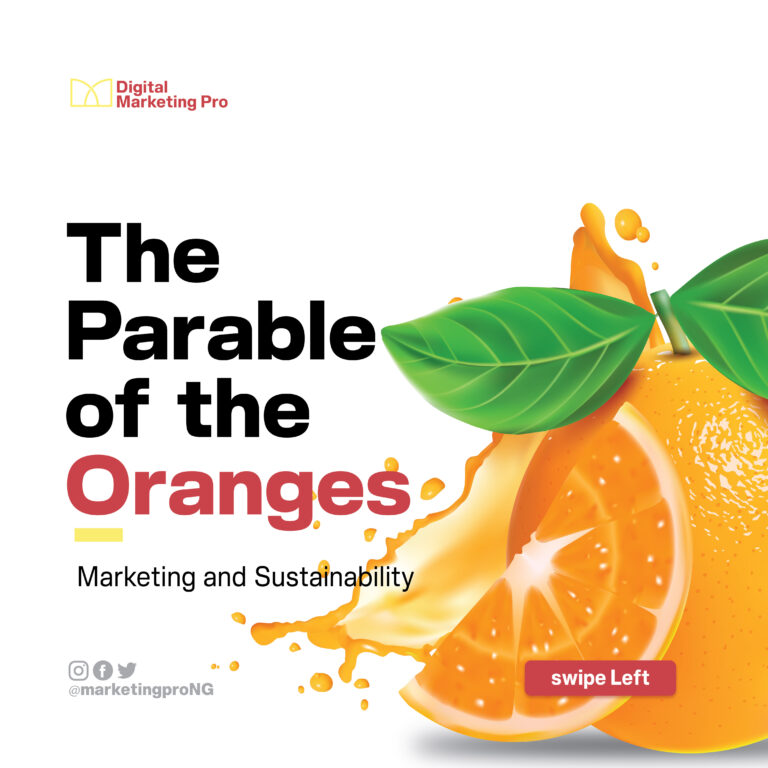
If you have to take an orange everyday in order to survive, you can continue to buy oranges everyday of your life, or buy oranges everyday while investing more in buying a farm and planting orange seeds, with the hope to either reduce or stop buying oranges when you start harvesting.
Paid Marketing is buying oranges everyday of your life. It works, but it is more expensive. You’ll die the moment you stop buying or when your money runs dry.
Organic Marketing is buying a farm and planting orange seeds. This is cheaper in the long term, you’ll get endless fresh oranges from your farm daily. You even stand a chance to start selling excess oranges from your farm to others like you who needs orange to survive. It just takes time to start working.
Both have their pros and cons. However, if your company want to live long, investing in organic marketing is your best bet.
Organic Marketing is SEO, growing social followership and engagement, etc.
Tip #2 - Marketing Product Use Cases is Better

If marketers were asked to choose the biggest marketing lesson from the success of Canva, it should be their incredible product positioning, and use cases.
If your product has 100 use cases, market each use case as a separate entity. This will make your #marketing effort more granular, easier for consumers to understand, and achieve a wider reach than marketing your product in one piece.
THE CANVA USE CASE
The team positioned Canva as not just a design tool, but as a solution for different cases.
They’ve positioned Canva with as a; Card Maker, Social Media Design Maker, Custom Print Maker, Office & Business Design Tool, Marketing Design Maker, etc.
They’ve succeeded in creating hundreds of product pages for each use case. And for each use case, the’ve to design hundreds of templates for customers to start from.
NB: You can find them all here
They’ve brilliantly succeeded in breaking the product down to the tiniest bit. And this will make it easier for them to succeed with marketing, sales and even #SEO.
The role of product marketers in defining messaging and use cases is perhaps the most pivotal to the success of any company.
The LESSON
1. Never market any product in one piece. You should rather break it down to the tiniest bit, and market each unit as a separate product on its own.
2. A landing page or homepage alone is usually difficult to position your product.
3. Are your customers using your product for what it wasn’t made for? Position yourself with it. That’s another use case.
Can you think of any product that can position itself in more ways than the company already does?
Tip #3 - A Product Can NEVER Market Itself
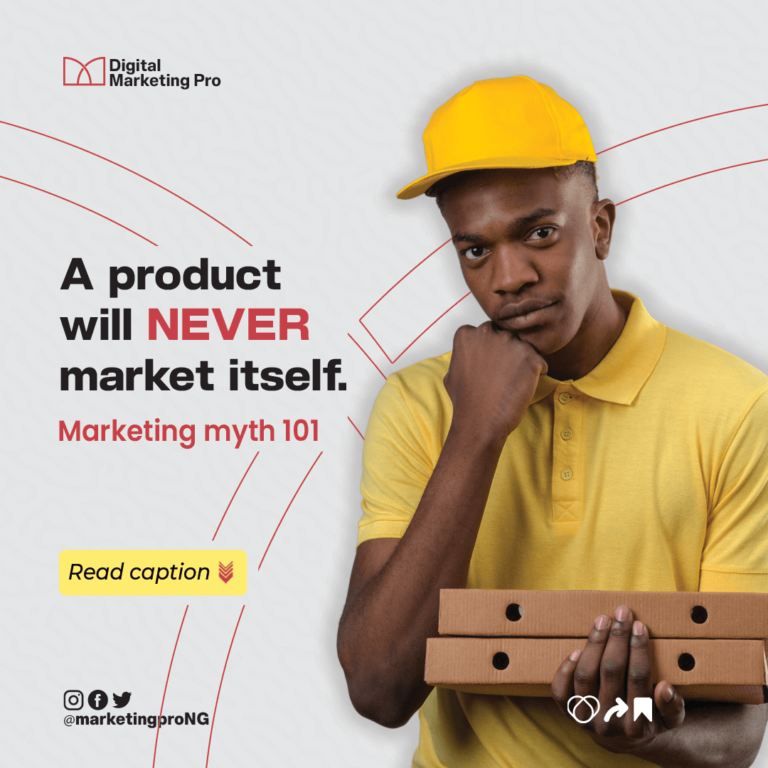
“A great product will market itself” is a mediocre statement, and it’s far away from the truth. If product could market itself, product marketers will not exist.
The statement is often a ploy from product leaders and founders with limited marketing knowledge to reduce marketing budget.
If there are strong marketing competitors in your industy, the one with the best product wins. However, if you’re in a niche with companies building incredible products, the one with the best marketing wins.
Marketing is always a differentiator.
Tip #4 - Not Every Marketing Channel is Great for your Busines
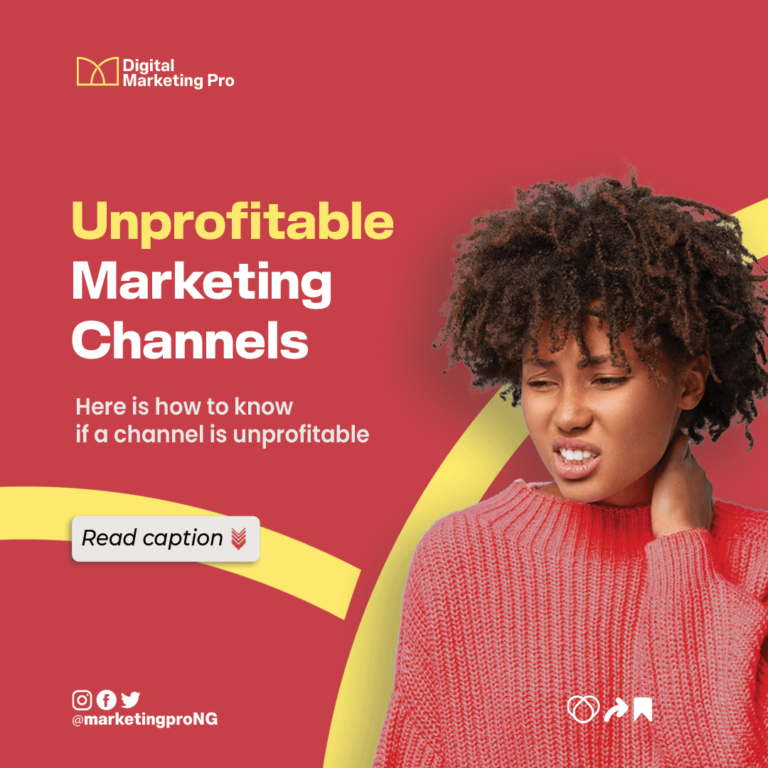
“An ads channel can be deemed unprofitable or unsustainable if the Customer Acquisition Cost (CAC) from that channel is higher than the Lifetime Value (LTV) of an average customer acquired from the channel”
- Let’s say you spend $100 on Google Ads to acquire a paying customer.
- If a customer pays $15 per month, and the LTV of your customer is 5 months, the maximum revenue you can generate per customer will be $75.
- In this case, even without adding how much it’ll cost you to service a customer for 5 months, you can already say a channel is unprofitable or unsustainable.
Many factors affect the profitability of a channel. Before you can make definite decision on whether or not a channel is unprofitable, you have to make sure you have done everything right.
– Are you selling the right product or services?
– Are you targeting the right people?
– Are your copy, landing page, and conversion optimization tactics effective?
– Are you tracking the right data?
– Do you have experts running your ads manager?
Above are all of the things that could affect the profitability of a marketing channel.
Tip #5 - Marketers aren't Magicians

Marketers are NOT miracle workers. You can be hopeful, and you can be prayerful, but never forget your realities.
Some founders, company boards or CEOs tend to live in a bubble, and many set objectives beyond their realities.
– Company A has asked the growth or marketing team to come up with a strategy that’ll make them grow from 500 to 30,000 customers within 6 months. (First Redflag)
– The marketing team sends them a proposal that involves a lot of engineering, product, customer support and even sales requirements, coupled with millions of $ in marketing budget.
– Company A looks at the lofty marketing strategy and ideas in it. They’re impressed. They’ll like it to happen. But they know they can only afford less than 20% of the resources the team demanded.
#Decision :
Company A orders the marketing team to acquire 30,000 customers with 20% of the resources they asked for.
#Example2:
An act of God or Natural Influence.
Do #NOT base growth projections on circumstantial or once-in-a-lifetime disruption.
– Zoom would never have thought they’ll grow to the level it did during Covid19 lockdown. Using the pandemic growth figures as a base for growth projection in the post-pandemic world is at best imaginary.
– A one-off event, though might give you the adrenaline, and can significantly change the future of your business, they can give a very skewed meaning to your data, especially if you depend on it for future predictions.
Founders should know not to bite more than they can chew, and marketing leaders should be frank with expectations to avoid future disappointment.
Tip #6 - Empower Your Marketing Teams Wihout Engineers

The website should be absolutely owned by the marketing, growth or communications team as the case may be.
A lot of startup websites are built with non-developer-friendly frameworks. Many marketing teams have to rely on engineering teams to change simple stuff like; typo errors, CTA button colour or text, replicate landing pages for AB testing, etc.
Using a no-code tool or CMS like WordPress is the right choice for almost every early-stage software startup. With this, you’ll have saved everyone a lot of headaches, and wouldn’t have to worry about any scale, but building a successful product.
I know some startups whose content teams have to rely on engineers to publish their blog posts for them. This “bulls**t” is unscalable.
Imagine how much free time your engineers would have saved if they didn’t have to change, test, and deploy every minor change on the website. Imagine how independent you’ll have made your marketing team to move fast, and test for what works without having to rely on the engineers.
The back and forth is killing you, it’s draining your teams of useful time to work on other things, and it’ll eventually kill your startup.
Tip #7 - Great Marketers are Master Copycats

There’s hardly anything you’re trying to achieve that others haven’t.
Try looking at companies similar to yours in other continents, your competitors or in economies similar to your primary location.
1. Study them intimately,
2. What are they successful at?
3. What channels are they adopting for #marketing? What’s the best among them?
Alternatively, look up on Linkedin to find people who’ve worked or are working with the said company. Get them on a call to answer as many questions as you may have.
Many go as high as headhunting their competitors’ star employees.
4. Can you replicate their growth strategies?
5. Can you plan & execute better than what they’ve done?
6. Did you learn anything from your competitors’ failure or success?
This is where you’ll find tested and trusted strategies. And it’ll help you reduce the time you have for testing and experimenting.
Tip #8 - Invest in the Most Important Hardskills for Marketers
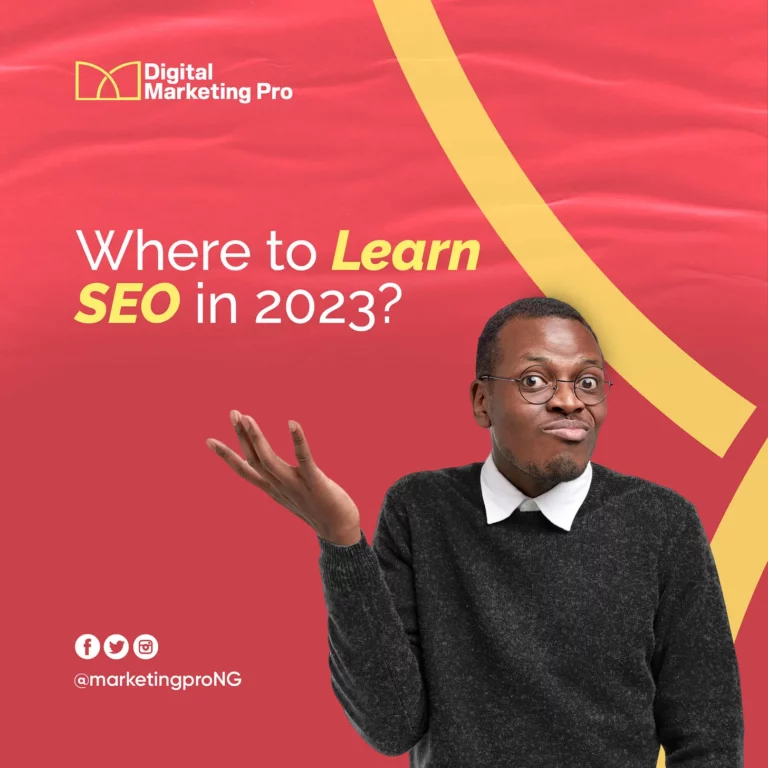
Microsoft, in 2020 listed SEO as the most important hard skill for every marketer to learn in this decade. About 9 billion searches are made on Google every day.
It is now important, more than ever for marketers to get businesses in front of billions of people searching for information, product and services on search engines.
Here are top places to learn SEO in 2023
Tip #9 - No Marketers is a Master of all
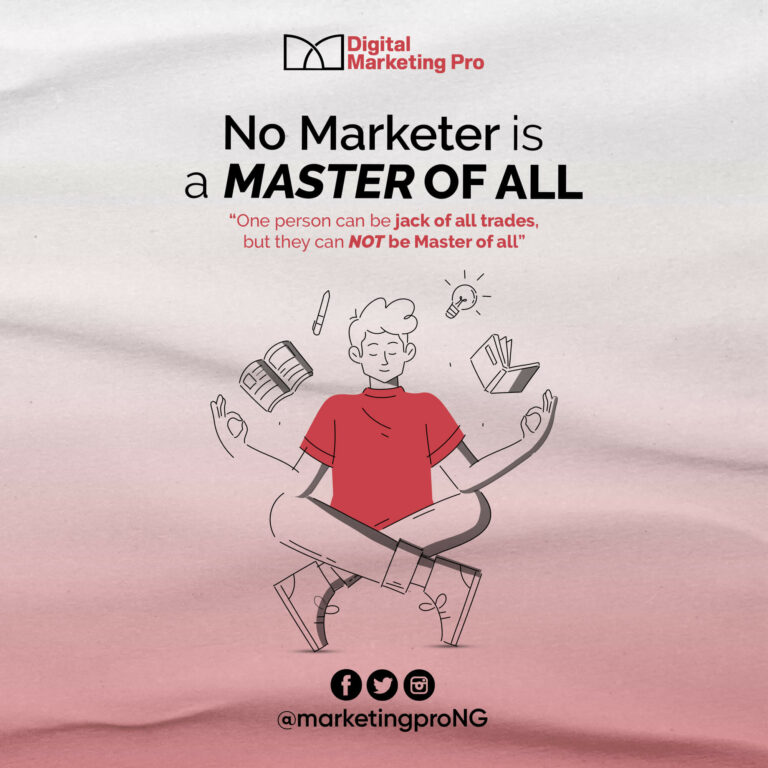
Don’t be mistaken. One person can be a jack of all trades, but they can NOT be the Master of all.
As your marketing career grows, it’s important to choose one or two marketing sub-skills and be excellent in them.
#Marketing or #digitalmarketing as the case may be is too wide to be an absolute master of all.
1. Paid Advertising or Performance Marketing ( Social Media, Google Ads, Digital billboards, etc)
2. SEO
3. Email Marketing
4. Growth Marketing
5. Conversion Rate Optimization
6. Influencer Marketing
7. Brand Marketing
8. Copywriting & Content Marketing
9. Digital Communication
10. Affiliate Marketing
11. etc.
Digital marketing is too wide for anyone to practice every branch of it at the highest level. There’s absolutely nothing wrong in knowing a bit of everything, but we all have biases for one or two of the listed fields.
For Founders & HR
As you scale your marketing team, you’ll realize the need for you to diversify hiring from marketing generalists who were great hires in your early stage to hiring domain specialists who will move your business forwards with specific channels.
Tip #10 - Founders & Unrealistic Marketing Goals
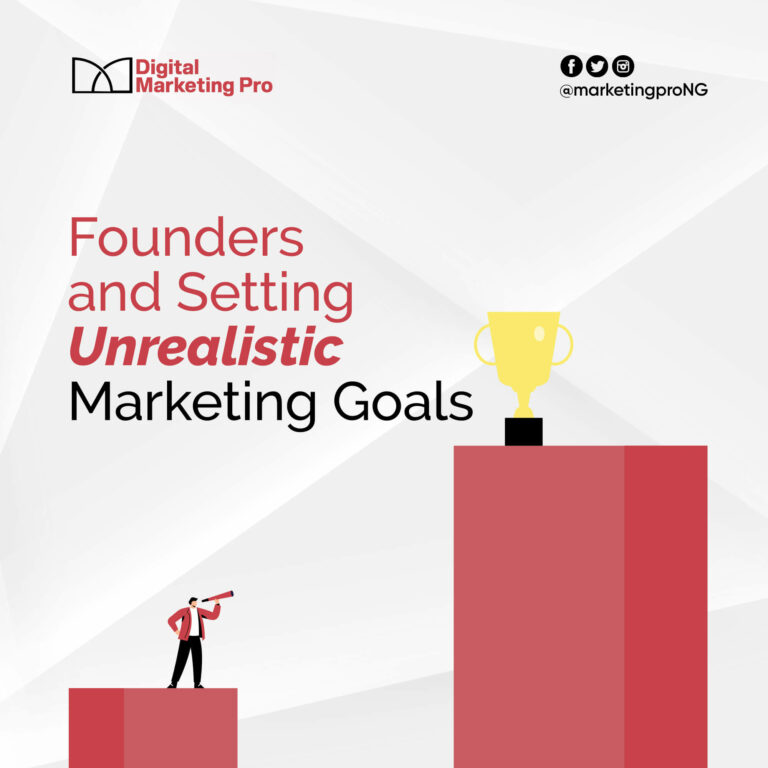
Some founders and CEOs set #marketing objectives that are unrealistic. Oftentimes, the #founders, board or CEO live in a bubble, and many set objectives beyond their realities.
For example:
– Company A asked the marketing team to come up with a strategy that’ll make them grow from 500 to 100,000 customers within 6 months.
– The marketing team sends them a proposal that involves a lot of engineering, product, customer support and even sales requirements. Coupled with millions of $ in marketing budget.
– Company A looks at the lofty marketing strategy and ideas in it. They’re impressed. They’ll like it to happen. But they know they can only afford less than 20% of the resources the marketing team demanded.
– Company A orders the marketing team to acquire 100,000 customers with 20% of the resources they asked for.
Unrealistic marketing goals don’t help anybody.
It is always best to establish a benchmark based on historical data. Customer acquisition goals or numbers should not be stated at whims. Especially if the company can’t support the goals
Tip #11 - The Unpolished Diamond in Marketing
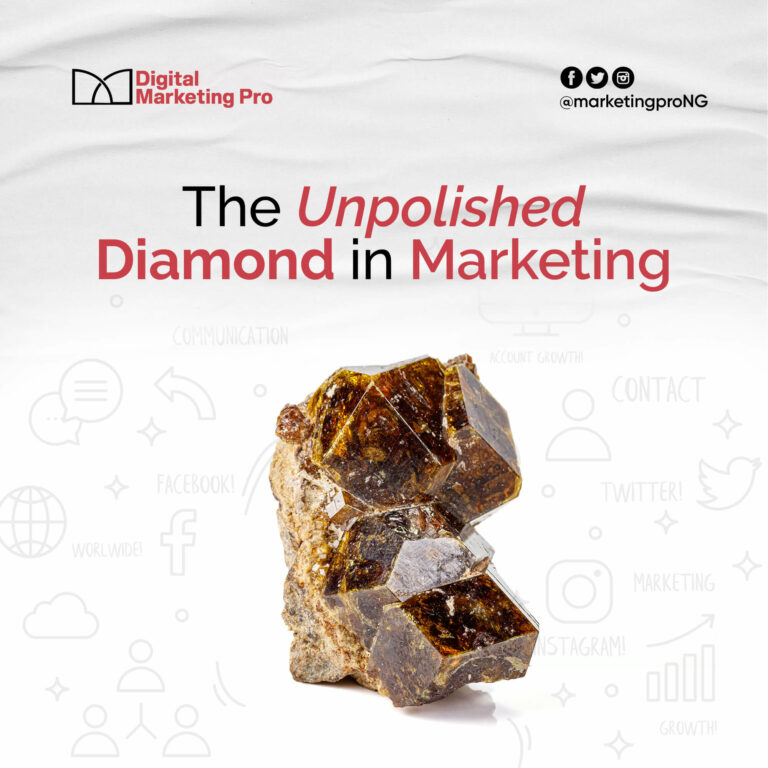
User-generated content is like unpolished diamonds. When used well, can help you build the growth engine your company deserve.
Exploiting user-generated content opportunities for your company will make it easier for customers to talk about your products online & offline. Before using UGC to be your perfect growth engine, you must;
1. Have an incredible product
2. Have great customer service
3. Have made feedback and customer testimonials important
4. Have infused virality loop in at the most important part of their product.
#1stSCENARIO
These companies are masters of customer marketing. Their growth is purely influenced by word-of-mouth. Their customers like them, and would tell anyone who wishes to listen about how “great they are”
Are your customers talking to others about you?
– Find ways to spur them to talk more. This is a recipe for exponential growth.
– Channel those discussions to where others can discover them. I.e. Review sites, Social Media, Google My Business, etc.
#2ndSCENARIO
These companies have perfected their feedback process and use customer testimonial content for performance marketing, and the backbone of their website copywriting.
– Promoting what your customers say about you tends to convert better than promoting what you say about yourself.
– How are your customers describing your product? Let it inform your website copy.
#3RDSCENARIO
These companies have infused virality into their product. They’ve made it easier for customers to expose their product to others, through branding, referrals or affiliates.
Empower your customers to be your content farm, the more they talk about you, the more you grow. And don’t be a stumbling block!
Tip #12 - The Unpolished Diamond in Marketing
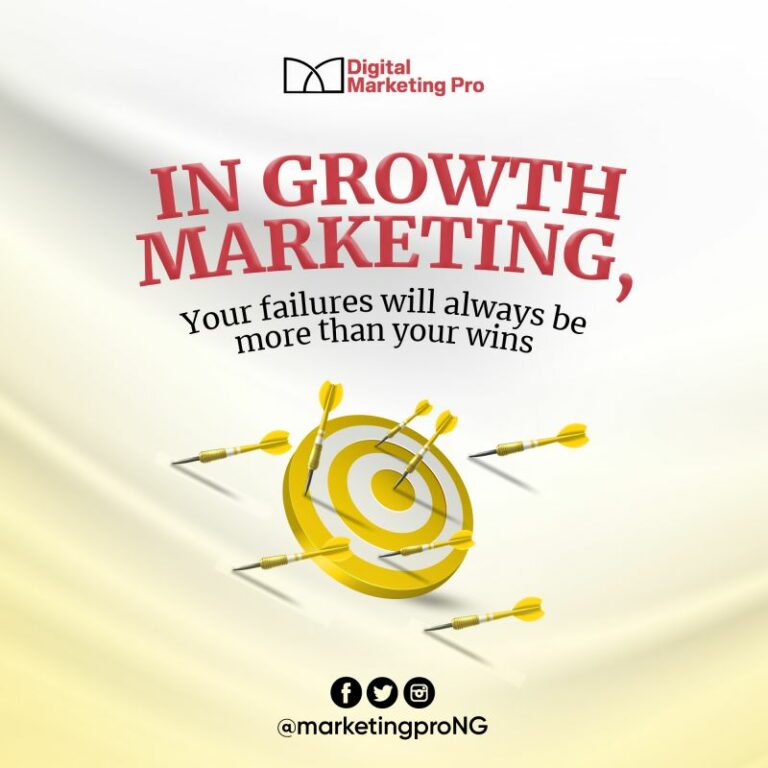
No one hit the bull’s eye with the first arrow. You’re allowed to fail.
Growth #marketing is a science, backed by acquiring solid data for every experiment. Many startups tend to prioritize adding new features than investing in growth experimentation because they’re not sure if it’s worth it.
– There are 1,000 failures for every great invention.
The fact is, In growth marketing, you’ll probably fail more than you win. But the wins will always be worth it, and they’ll overshadow your numerous failures.
– Don’t be afraid to experiment
– Do more AB testing
– Make data-backed decisions from your experimentations.
Tip #13 - The Unpolished Diamond in Marketing
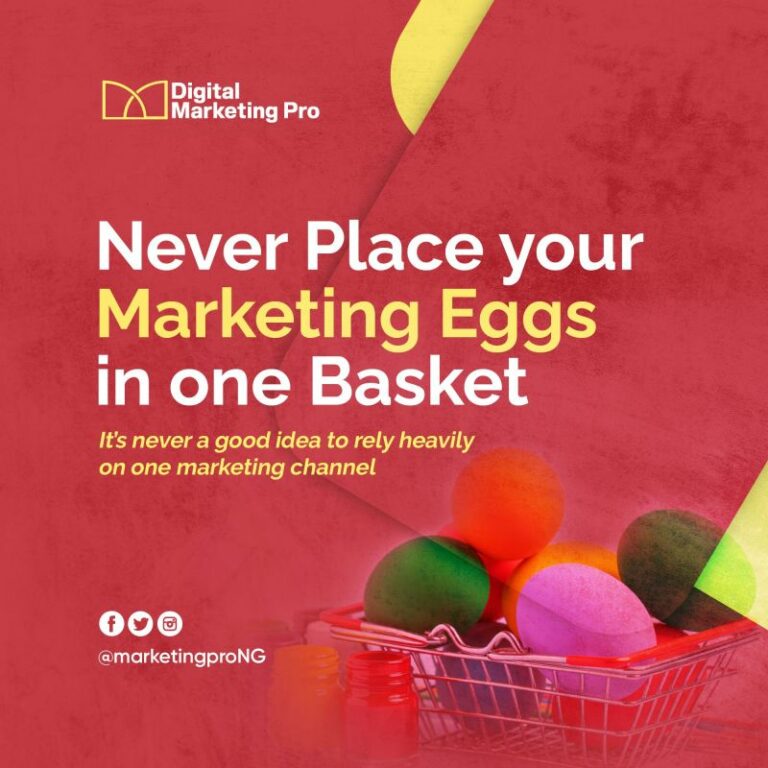
It’s never a good idea to rely heavily on one marketing channel.
1. Google’s Core update, technical error or stiff competition can knock off the leads from organic search traffic(SEO).
2. You might have difficulty experimenting or measuring the success of your Facebook ads campaign when Apple decides to make conversion tracking difficult.
3. What happens if a disgruntled employee deletes your Youtube videos or social media accounts with millions of followers?
4. What happens if your social account gets hacked or suspended and you’re unable to retrieve it?
5. Advertising costs will continue to rise. What happens if the advertising cost for your best marketing channel becomes unsustainable?
Basically, anything can happen. Do not put all your eggs in one basket.
The lesson here is never to rely heavily on one #marketing channel that’ll make your business close down if anything happens to it. Do NOT invest heavily one just one marketing channel, while neglecting others. Consider diversifying your investment into new potential channels.
Tip #14 - What is a Sustainable Growth Engine
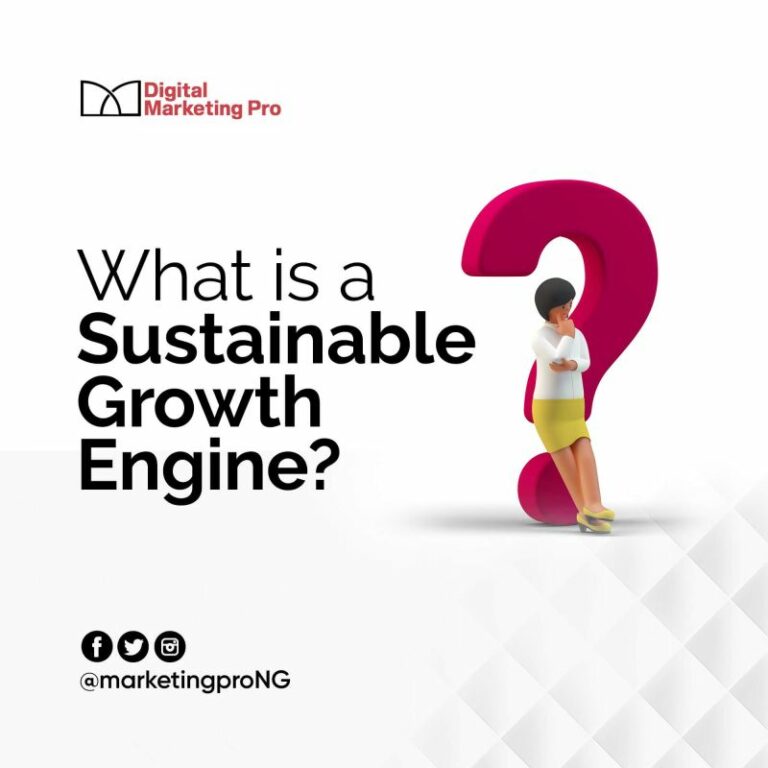
Startups can hack growth around 6 major growth engines. Namely;
1. Virality: Word-of-mouth, referrals, etc.
2. Content: SEO, videos, newsletters, etc.
3. Sales: Outbound salespeople
4. Performance Marketing: Social media ads, Google ads, other PPC ads, etc.
5. Partnership: Integrations, affiliates, collaborations, etc.
6. Offline Location: walk-in locations for product demos, fairs, etc.
Many have argued that performance #marketing or even sales are not a sustainable growth engine. However, you can characterize a growth engine as;
1. An acquisition system that can be piloted by customers. E.g. Referrals, Word of Mouth, UGC, etc.
2. An acquisition system that’ll have the highest average Revenue: CAC ratio. I.e A system that brings in high-quality leads with the smallest possible acquisition cost. E.g. SEO, Affiliates, Partnerships, Integration, or even ads, etc.
3. An acquisition system that can be piloted by-product: E.g. Product branding, B2C2C or B2BC customer exposure.
In choosing which growth engines/channel is right for you, you have to;
– Validate or test the channel
– Invest and hire channel expertise
– Scale

